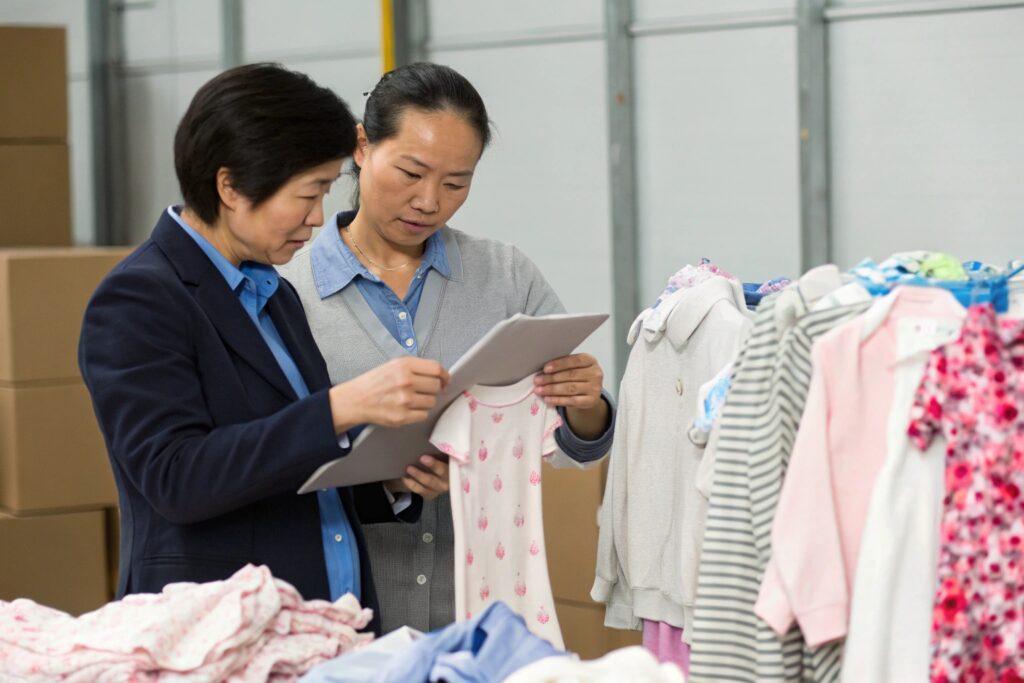Importing babywear to the U.S. or other countries can become costly—especially when tariffs add unexpected fees to your shipments.
To avoid or reduce tariff costs on baby outfits, choose duty-free trade partners, classify your goods properly, leverage free trade agreements, and work with experienced freight forwarders.
In this guide, I’ll show you how to keep your import costs low while staying compliant and competitive.
What Countries Offer Duty-Free Baby Clothing Imports?
Not all imports are taxed equally. Some countries offer favorable trade status with the U.S., allowing baby clothing to be imported duty-free or at lower rates.
Countries with trade agreements or special tariff programs—like Mexico, Jordan, and select African nations—may allow duty-free babywear imports to the U.S. if specific conditions are met.

Which countries offer duty-free or low-tariff babywear access to the U.S.?
Here’s a list of key regions to consider:
| Country/Region | Program/Agreement | Tariff Rate for Babywear |
|---|---|---|
| Mexico | USMCA (NAFTA replacement) | 0% (with origin compliance) |
| Jordan | U.S.-Jordan Free Trade Agreement | 0% for eligible products |
| Vietnam | MFN Rate (with HS code accuracy) | 8–12%, lower than China |
| Bangladesh | MFN with low labor costs | 16% nominal, but low COGS |
| Cambodia | Low MFN tariffs | Competitive for woven/knits |
| Kenya, Ethiopia | AGOA (African Growth Opportunity Act) | Duty-free (textile rules apply) |
At Fumao, we source fabrics and trims from multiple regions and help clients choose duty-efficient combinations depending on their shipping destination.
What makes goods qualify for duty-free treatment?
- Certificate of Origin confirming local production
- Rule of Origin compliance (e.g., yarn forward rules under USMCA)
- Correct HS Code classification (especially for age-based babywear categories)
- Documentation must match declared country of origin
Even if you’re sourcing from China, using a regional processing center like Mexico or Jordan may help reduce final tariff exposure.
How to Classify Babywear Correctly to Lower Tariffs?
Babywear has its own tariff codes—based on age group, material, and garment type. Using the wrong one could increase your duty rate.
Accurate classification of baby outfits using the correct HS code and description is key to avoiding overpaying on customs duties.

What are the most common HTS (HS) codes for baby outfits?
| Product Type | HTS Code (U.S.) | Notes |
|---|---|---|
| Cotton baby garments | 6111.20.6070 | Knitwear, typically 0–8.1% |
| Synthetic baby garments | 6111.30.5070 | Polyester-based clothing |
| Woven baby cotton garments | 6209.20.5045 | Usually 8.1–16% |
| Wool babywear | 6111.10.0035 | Higher tariff category |
The 6111 series applies to babywear under 24 months and typically carries lower duties than adult or toddler clothing.
How do classification errors cause extra fees?
Mistakes like these can cost you:
- Mislabeling 2T-size as babywear (infant vs toddler)
- Declaring knitwear as woven (or vice versa)
- Omitting key fiber information (e.g., “cotton/poly blend”)
- Guessing the age range instead of using garment labeling proof
At Fumao, we help clients classify their products correctly and offer pre-filled customs declarations to simplify port clearance.
Tips for Using Trade Agreements to Avoid Extra Fees?
Even with tariffs in place, there are trade agreements designed to give you legal savings—if you meet the criteria.
Free trade agreements (FTAs) like USMCA or bilateral deals can eliminate or reduce tariffs on babywear when sourcing and documentation follow the rules.

What FTAs or trade rules help reduce tariff costs?
| Agreement | Benefit | Requirements |
|---|---|---|
| USMCA | 0% tariff for Mexico-made babywear | Yarn-forward rules, origin certificate |
| AGOA | Duty-free imports from select African countries | U.S. or local inputs required |
| Jordan FTA | Eliminates most textile tariffs | Full manufacturing in Jordan |
| CAFTA-DR | Duty-free from Central America | Region-specific yarns, origin docs |
Ask your manufacturer if they qualify under a trade program. If not, request Certificate of Origin documentation and check if indirect routing (e.g., via Mexico) is feasible.
How can a factory help you qualify?
- Sourcing compliant fabrics and trims
- Providing country-of-origin paperwork
- Stating correct tariff classification
- Labeling product to match HTS description (e.g., “Infants’ cotton knitwear”)
At Fumao, we support DDP shipping for clients in the U.S., and provide HS code + origin verification to reduce delays and surprises.
How to Work with Freight Forwarders to Reduce Costs?
Shipping plays a big role in landed cost. A good freight forwarder can help you bundle shipments, classify goods, and handle customs documents properly.
Freight forwarders help reduce tariff costs by offering guidance on classification, bulk consolidation, documentation, and indirect shipping options.

What services should a freight forwarder offer to help lower costs?
| Service | Benefit |
|---|---|
| Tariff classification review | Ensures HS codes match product specs |
| Bulk shipment consolidation | Reduces per-unit shipping cost |
| DDP options | Avoids surprise duties and handling fees |
| Section 321 split shipping | For orders under $800 (duty-free) |
| Multi-country routing | Optimizes duty impact via partner hubs |
Some Fumao clients ship weekly orders to U.S. fulfillment centers using DDP sea + truck routes, cutting costs by 20–25% compared to air or courier-based shipping.
What questions should you ask a freight partner?
- “Can you help with HTS code classification?”
- “Do you offer DDP to my state or port?”
- “Can we consolidate orders to lower fees?”
- “Can you pre-check with U.S. Customs on my product type?”
- “Do you support Section 321 shipments for eCommerce?”
Working with a knowledgeable forwarder ensures your babywear lands smoothly—without extra costs, detentions, or delays.
Conclusion
Tariffs on babywear can be tough—but smart sourcing, correct classification, trade agreements, and freight partnerships make it easier. With the right strategy, you can keep your costs low and your babywear business growing.










